When it comes to creating the best possible experience on the water, understanding and dialling in your equipment are two of the most important steps an angler can take. Although all fly rods might look similar, they are not created equal. Understanding which fly rod is suitable for your fishery works very much in your favour.
We can face many different scenarios – from casting leaders in excess of six metres (20 feet) during a springtime chironomid hatch, to throwing heavy tungsten-weighted fly lines into a stiff wind – when fly-fishing on stillwaters. In this article, you’re going to learn exactly which fly-rod lengths and actions are best suited to different types of stillwater fishing.
Rod Length
Just as anglers fishing small streams prefer shorter rods for the delicate presentation of tiny dry flies, stillwater anglers will find that they can benefit from longer rods. While the standard length for most 5- and 6-weight rods falls right around 2.74 metres (nine feet), rods in the 2.9- to three-metre (9.5- to 10-foot) range are popular lake-fishing tools.
The first reason longer rods can prove beneficial is the fact that the tip of the rod will be further from the angler, creating a wider casting loop. While tight loops and immense line-speed will serve anglers in many situations, they are neither necessary nor even advantageous on stillwaters.
When it comes to turning over long leaders in the six-metre (20-foot) range that have a strike indicator at one end, and a small barrel swivel or tippet ring at the other, the most important step is to keep the fly from coming in contact with the rest of the leader. A shorter rod will naturally tighten your loop, which increases the chances of a collision between your fly and the indicator – often resulting in a tangle that is well beyond repair.
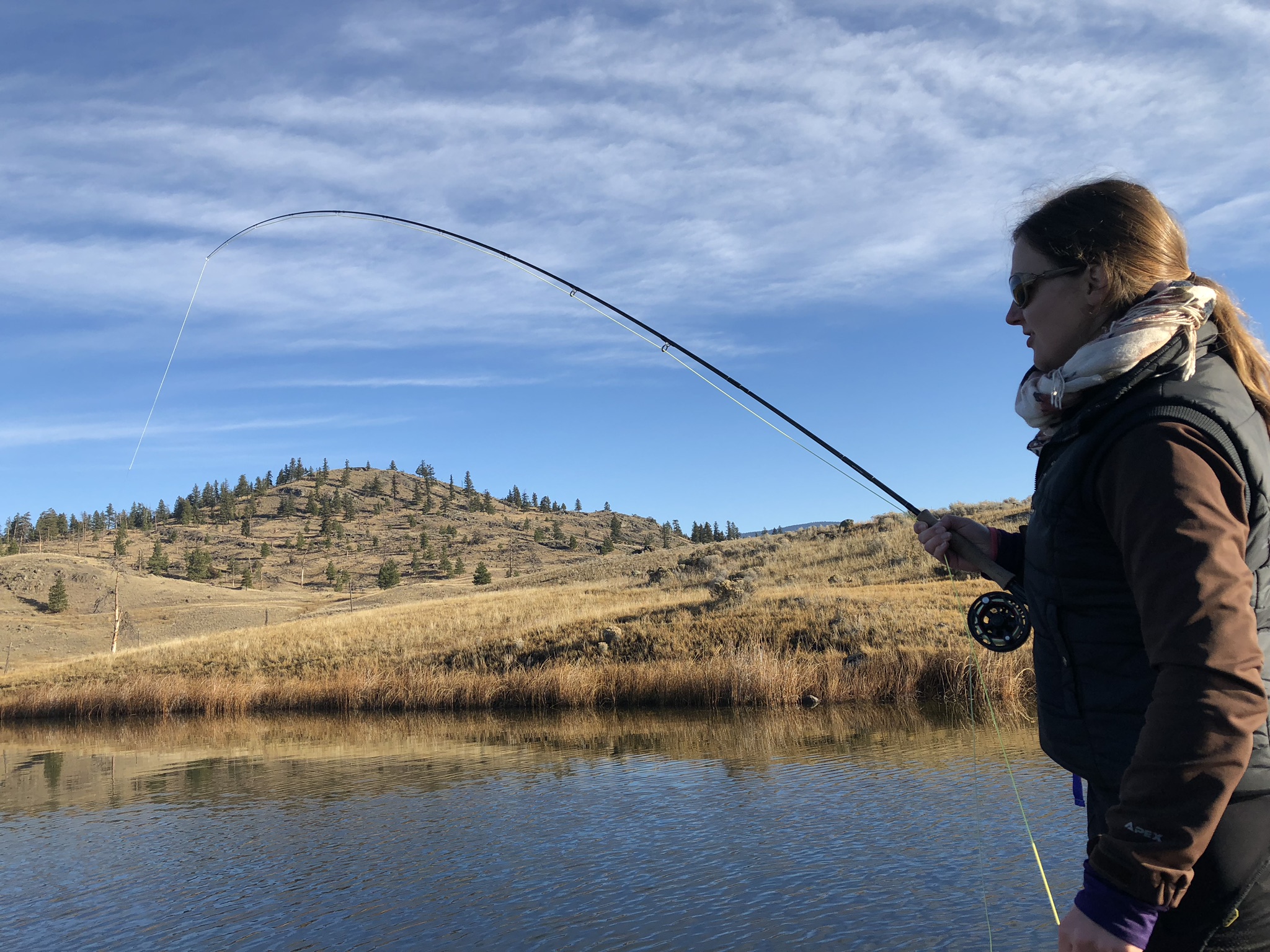
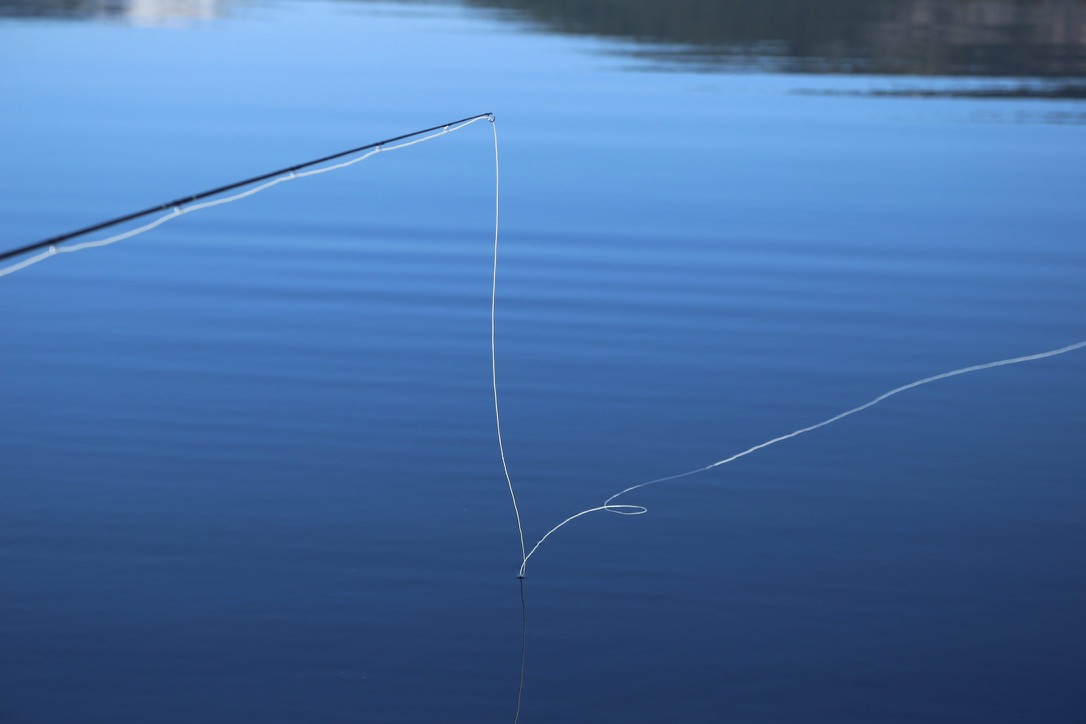
Another great benefit to longer rods is their immense roll-casting capabilities. When casting long leaders, the less time your presentation can spend in the air, the better. A roll cast eliminates the need for a back cast, which reduces the chances of getting tangled to almost zero. Longer rods can effortlessly deliver long-leader setups with a single roll cast.
Rod Action
While the fly-fishing industry continues to lean in the direction of light, ultrafast-action fly rods, these aren’t always necessary when fly-fishing stillwaters. Fast-action rods are stiffer, and the designation “fast” is the relative rate at which these rods recover from being bent. While fast-action rods are great for delivering heavy fly lines, or casting in windy conditions, more flexible rods in the medium- to medium-fast-action categories may be of greater benefit for stillwater anglers.
When fishing long leaders with or without a strike indicator, a slower-action rod will allow you to have a better chance of landing your setup properly. A more willowy rod will force you to make deliberate casting motions. Slow your arm stroke down, and present your fly line with a fairly open loop; that will keep your fly, strike indicator, and long leader more separated, and prevent them from tangling.
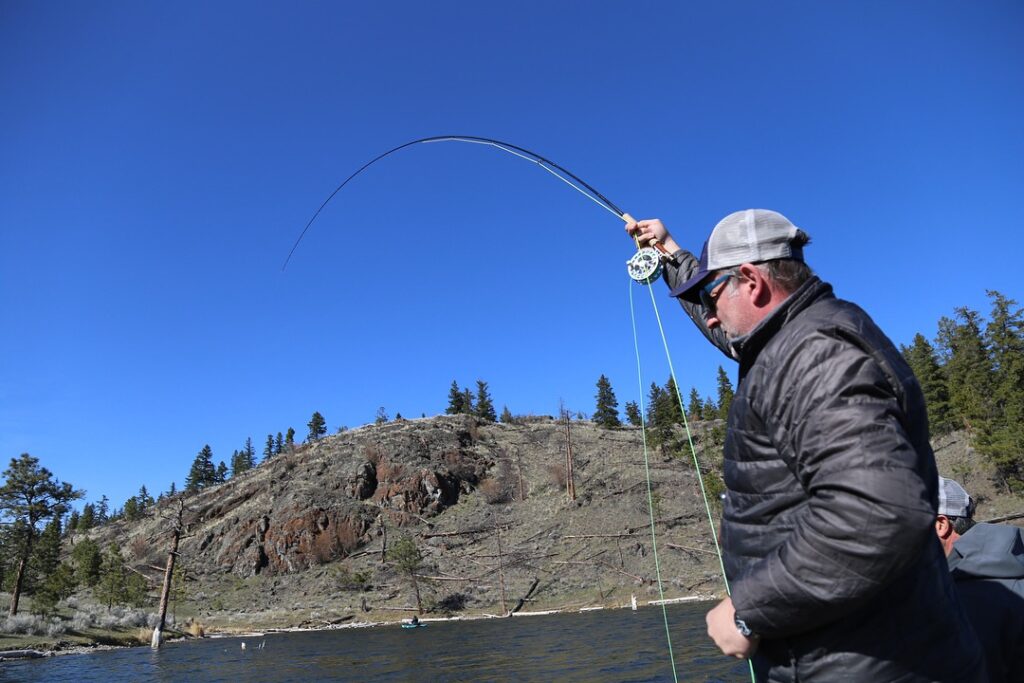
An added advantage of rods on the slower-action side is their ability to protect your tippet when fighting big fish. Stiff, fast-action rods with heavy backbones can often result in losing fish close to the boat. Longer rods, with a more forgiving flex, will absorb more of the shocks and allow you to quickly land bigger fish, even on lighter tippets.
Final Thoughts
When it comes to purchasing a fly rod off the shelf, there is no shortage of price points, lengths, actions, and weights. Buying the right equipment from the get-go is less frustrating, and will ultimately deliver a more enjoyable fishing experience.
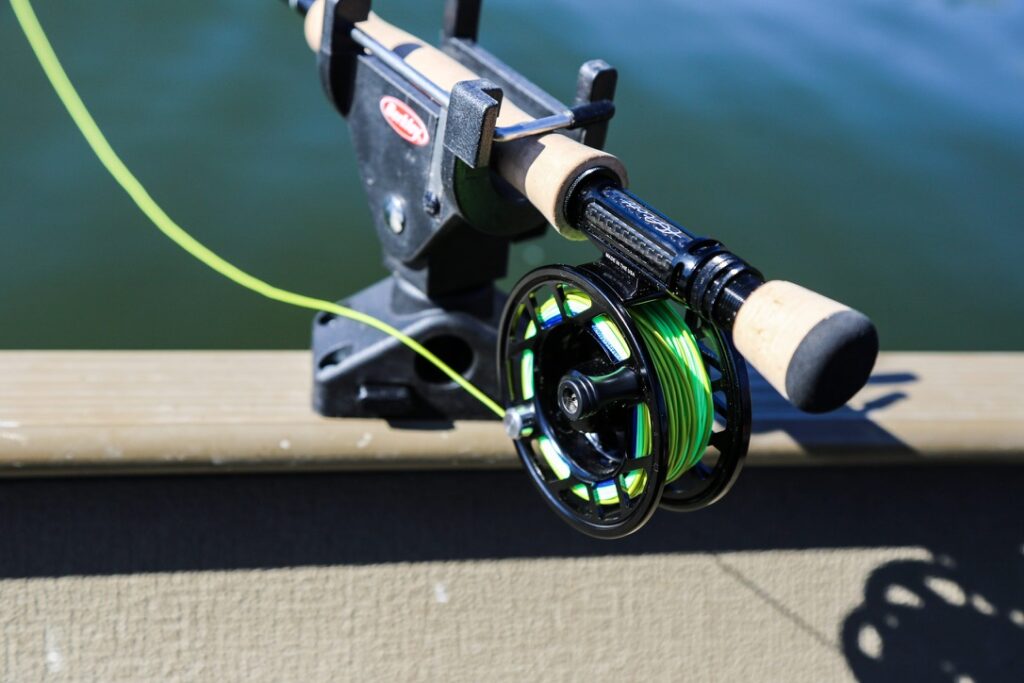
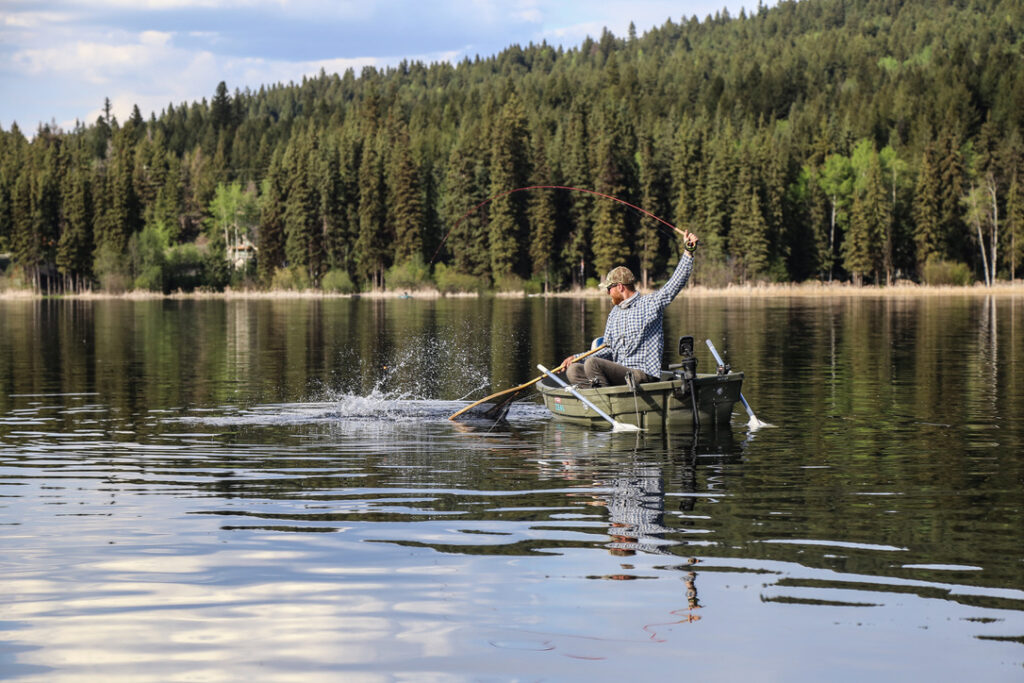
I hope this article proves valuable when the time comes to add another fly rod to your quiver. While my favourite rod for chironomid fishing is a three-metre (10-foot) 5-weight, if one were to settle on a single dimension for all stillwater situations, a 2.9-metre (9.5-foot) 5-weight would be a versatile and valuable tool on the water.
Author: Jordan Oelrich
Images: Jordan Oelrich
Jordan Oelrich was the owner of Interior Fly Fishing Co. When he’s not guiding, Jordan shares his knowledge for fishing as a writer and fly-tying instructor.